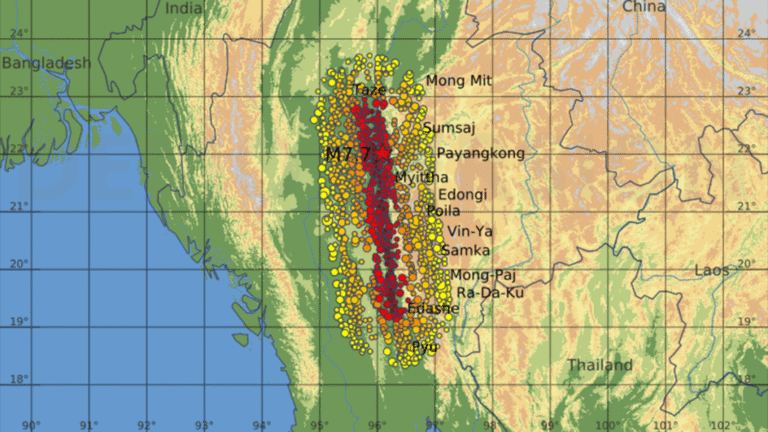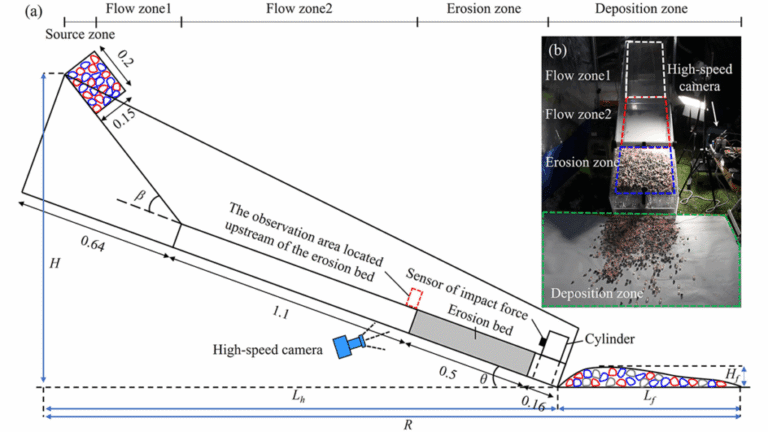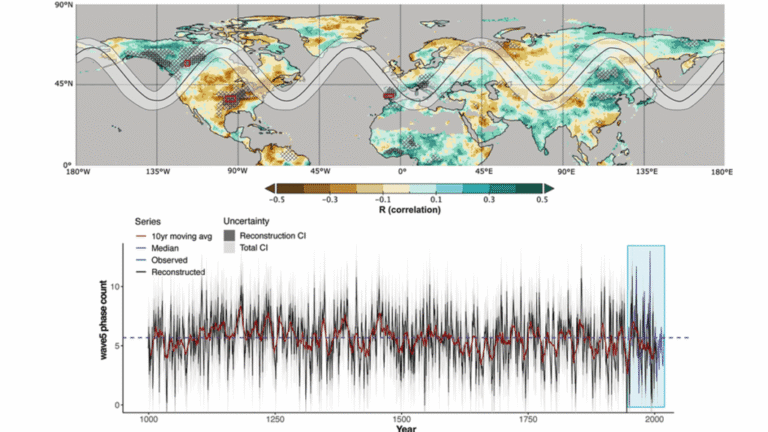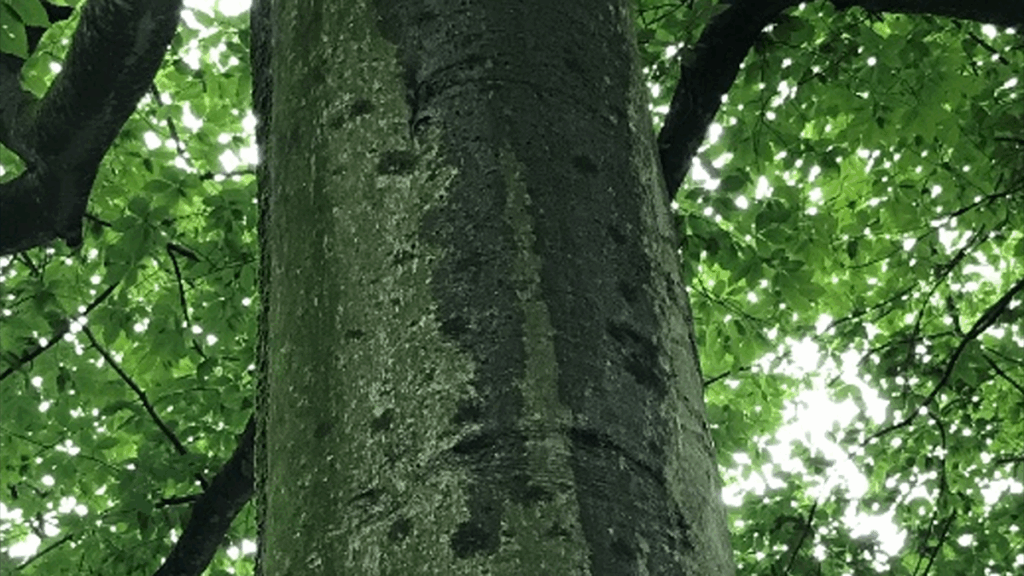
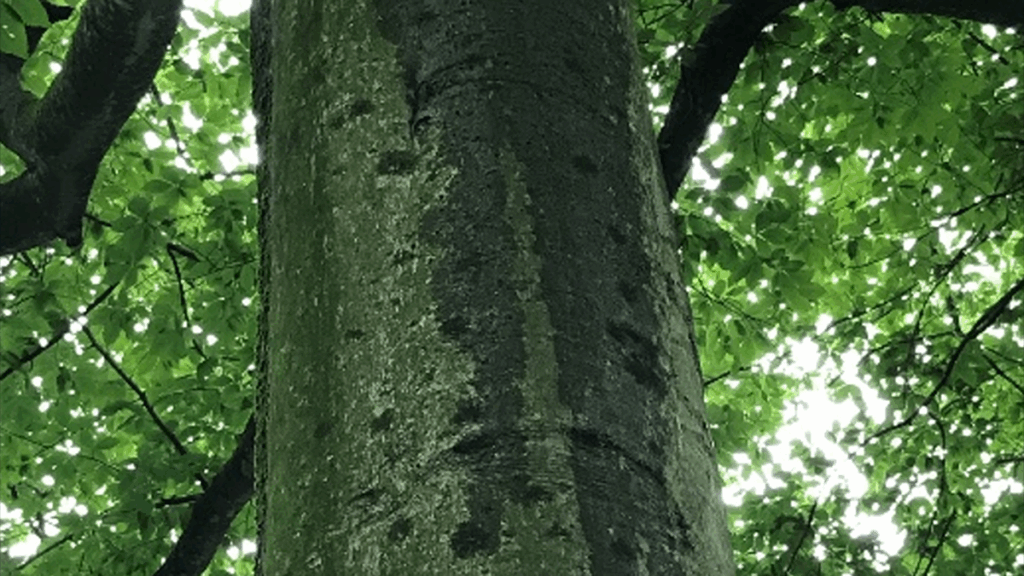
Editors’ Vox is a blog from AGU’s Publications Department.
Stemflow, or the flow of water along the surface of a plant’s stem, has been a subject of inquiry in forest hydrology since the latter half of the 1800s given its relevance to water balance studies. The consequences of stemflow to ecological and soil biogeochemical processes led to an influx of research in subsequent years.
Today, stemflow is a burgeoning research area for diverse groups of people because it sits at the nexus of the geosphere, atmosphere, and hydrosphere. Recent interest in the topic stems from an engineering and urban planning perspective as, despite its long history of study, research has not focused on the physics of how water moves down the stem and what forces control these actions.
A new article in Reviews of Geophysics takes the first step in exploring and defining the hydrodynamics of stemflow. Here, we asked the authors to give an overview of stemflow hydrodynamics, how scientists have applied established theory in new ways to explore this broadening field, and potential future research directions.
In simple terms, what is stemflow?
Stemflow is the aboveground flow of water along the exterior surface of a plant stem.
Stemflow is the aboveground flow of water along the exterior surface of a plant stem. It is initiated after precipitation intercepted by leaves and branches drains from outlying parts of the plant crown down the stem/trunk to the soil surface around the plant base. Unlike raindrops that pass unhindered through a plant canopy or penetrate it by dripping or splashing from vegetative surfaces (known as throughfall), stemflow experiences longer contact time with the surface of the stem.
On trees, this lengthened exposure of stemflow-bark interactions enables higher nutrient leaching and subsequent delivery of concentrated nutrients and water to roots. The funneling of enriched waters to the tree base is the primary reason that stemflow is a main contributor to what is termed ‘hot spots’ and ‘hot moments’ in biogeochemical cycling of near-trunk soils. This indicates that the input of water, solutes, particulates, and other matter are uneven in space and time with soils near tree trunks representing an area of disproportionately high rates of biogeochemical cycling.
What role does stemflow play in the broader environment?
Stemflow connects the atmosphere, biosphere, and geosphere. It links the canopy of a tree to the soil and acts as a pathway that delivers water and the substances it carries down the trunk to the ground. Along this path, water interacts with the bark and the organisms living on or within it, including fungi, bacteria, lichens, mosses, metazoans, and insects. For these reasons, stemflow has been traditionally studied in forest hydrology and forest ecology circles, but there is now elevated interest within the engineering and urban planning communities to quantify it.
For example, with respect to pollutant cycling, stemflow can account for some differences in the spatial patterning of radiocesium, a radioactive form of the element cesium, in near-trunk soils. In urban planning and stormwater design, for instance, stemflow could exacerbate stormwater runoff in areas without favorable soil conditions (i.e., paved areas, areas with compacted soils) where water could infiltrate. The role of trees in meeting different ecosystem services within broader green infrastructure plans is still being explored.
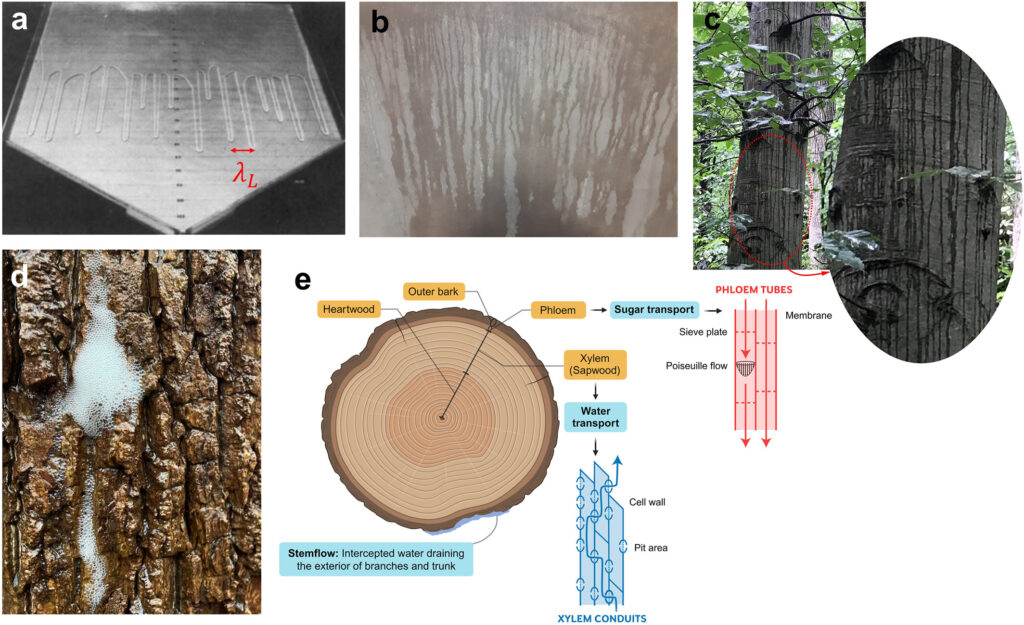
How do scientists observe and measure stemflow?
The first stemflow measurements were conducted by Karl Eduard Ney in 1870. Later, in 1881, W. Riegler established a link between the arrangement of branches and leaves and the amount of water flowing down the tree trunk. Riegler’s work paved the way to a line of inquiry common in ecology: exploring relations between structure (in this case tree architecture, bark properties, etc.) and function (amount and chemical composition of water in stemflow, sustenance of life dwelling on bark surfaces, etc.).
Measuring stemflow is based on capturing the volume of water that flows down a tree stem or trunk during and after a rainfall event.
Measuring stemflow is based on capturing the volume of water that flows down a tree stem or trunk during and after a rainfall event. The water capturing mechanism involves attaching collars or gutters around the tree trunk. These capturing mechanisms direct water into a nearby collection system. The collection system is usually formed by a container or containers where changes in water volume within the container can be measured over time, which allows the calculations of flow rates and relate them to rainfall data.
The instrumentation used to record the changes in volume of water with time varies in time scale. Tipping-bucket gages and containers with automated pressure recording devices as well as optical methods have all been employed in field studies to track the volume of water changes in time. These devices enable determination of stemflow on time scales of a few minutes to multiple years. Stemflow measurements are certainly an area that can benefit from rapid advancements in instrumentation and dedicated facilities. Stemflow hydrodynamics, once completed, may also enable ‘in-silico’ (or computer modeling) studies addressing relations between ‘structure’ and ‘function.’
What is stemflow hydrodynamics?
Hydrodynamics is a branch of fluid mechanics concerned with the motion of fluids (especially water) and the forces acting upon them. The other key branch of fluid mechanics is hydrostatics, which deals with forces acting on fluids when the fluid is at rest (as may be the case for water behind a dam). Stemflow hydrodynamics is a subset of hydrodynamics that seeks to explore fundamental connections between water depth, velocity, and flow rates on stems in relation to the governing forces.
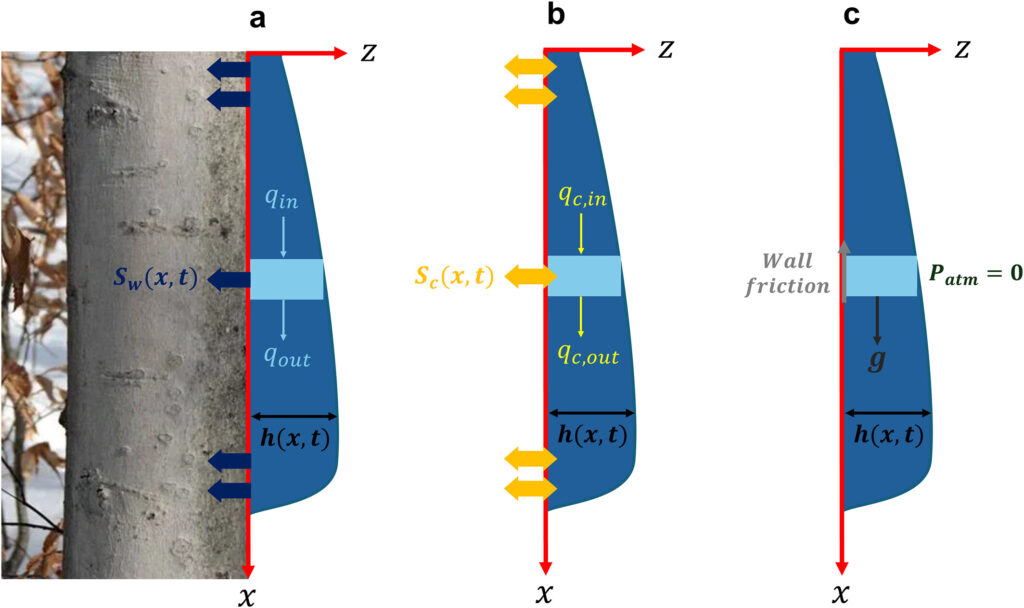
At any point on the stem where water flows, these forces are primarily classified as body forces (gravitational), surface forces (friction), and line forces (surface tension). Any imbalance between these forces cause water to accelerate when the driving forces (gravity) exceed the resistive forces or to decelerate when resistive forces exceed the driving forces. Describing the resulting flow rate and the forces acting on water as it traverses the stem remains a daunting challenge to be confronted by stemflow hydrodynamics. The force imbalance and the resulting acceleration/deceleration is mathematically expressed as a conservation of momentum equation much like Newton’s second law that states the net force imbalance per mass determines the acceleration of a solid object having a fixed mass.
What is thin film theory and how can it apply to stemflow hydrodynamics?
Thin film theory is a branch of fluid mechanics that describes the depth and velocity of a thin layer of fluid moving over a surface. Its name derives from certain approximations to the conservation laws of mass and linear momentum when the film’s thickness is much smaller than the length or width of the domain (e.g. trunk height). It was utilized to find approximate solutions for seemingly intractable engineering problems that were otherwise difficult to solve, such as coating processes in industry (e.g., paint, polymer films), lubrication layers between surfaces, mucus transport in lungs and airways, tear films on eyes, microfluidics and lab-on-a-chip devices, among others. The theory also has an extensive history and usage in hydraulics and hydrology where it is referred to as the shallow water equations.
These equations were originally proposed in the 19th century by Adhémar Jean Claude Barré de Saint-Venant. The significance of these equations cannot be overstated as Saint-Venant was one of the 72notable French scientists and engineers whose names are inscribed on the Eiffel Tower in Paris (France). In hydrology and hydraulics, the shallow water equations are routinely used to describe unsteady flow in streams and rivers, flood routing, flood waves following a dam break, overland flow on hillslopes, estuarine and tidal modeling, among others. All these flow types are based on the so-called small slope approximation and do not account for line forces or surface tension. Stemflow, however, occurs on almost vertical stems and therefore does not satisfy the small slope approximation. Moreover, surface tension can play a role in the force balance as water traverses the stem. These factors may have played a role in why the Saint-Venant equations were overlooked in the study of stemflow.
What are the major unsolved or unresolved questions and where are additional research, data, or modeling efforts needed?
There are numerous challenges that need to be addressed before a complete description of the governing equations of stemflow hydrodynamics can be declared. These challenges begin by expressing frictional and line forces as a function of velocity and depth, as well as formulating water losses to the bark interior as water travels across its surface. Below is a partial list of just three unresolved issues related to forces characterization and their connection to the local bark properties:
Fluid Properties: The addition of surfactants due to plant residue (e.g., acids), dust particles (e.g., salt), or exuded sap (e.g., resin) can create foam or soap‐like flow to occur along the stem. These surfactants can alter water properties such as viscosity and surface tension in ways that await exploration. They can also introduce spatial gradients in interfacial properties such as surface tension that may lead to unbalanced planar stresses at the air-water interface that induce motion within the film.
Surface Tension: Much of the thin film theories represent surface tension as a static balance of all forces along the contact line between the bark surface, the moving waterfront, and the ambient air. However, in the case of an accelerating or decelerating water movement, additional terms disrupt the force balance along the contact line due to unsteadiness, inertia, and friction. These effects have not been quantified for bark surfaces. Surface tension also plays a key role in controlling the spatiotemporal evolution of traveling waves on the falling water sheet. It will be a challenging task to understand the effect of capillary forces on such nonlinear waves that are traveling on complex, nonstandard, and multiscale geometries such as a tree bark.
Breakdown of Sheet Flow: Thin film theory treats water movement as a sheet. However, protrusions and cavities within the bark disrupt the sheet flow representation. There are instances where water piles up in fissures and cracks – and is then suddenly released (jetting) or drips out, to contribute to stemflow volume elsewhere on the bark surface. The breakdown of the sheet flow approximation and what physics becomes appropriate when this breakdown occurs is not settled.

—Gabriel G. Katul (gaby@duke.edu; ![]() 0000-0001-9768-3693), Duke University, USA; Bavand Keshavarz (
0000-0001-9768-3693), Duke University, USA; Bavand Keshavarz (![]() 0000-0002-1988-8500), Duke University, USA; Amirreza Meydani (
0000-0002-1988-8500), Duke University, USA; Amirreza Meydani (![]() 0000-0002-7932-1477), University of Delaware, USA; and Delphis F. Levia (
0000-0002-7932-1477), University of Delaware, USA; and Delphis F. Levia (![]() 0000-0002-7443-6523), University of Delaware, USA
0000-0002-7443-6523), University of Delaware, USA
Editor’s Note: It is the policy of AGU Publications to invite the authors of articles published in Reviews of Geophysics to write a summary for Eos Editors’ Vox.
Citation: Katul, G. G., B. Keshavarz, A. Meydani, and D. F. Levia (2025), Waterworks on tree stems: the wonders of stemflow, Eos, 106, https://doi.org/10.1029/2025EO255027. Published on 21 August 2025.
This article does not represent the opinion of AGU, Eos, or any of its affiliates. It is solely the opinion of the author(s).
Text © 2025. The authors. CC BY-NC-ND 3.0
Except where otherwise noted, images are subject to copyright. Any reuse without express permission from the copyright owner is prohibited.
